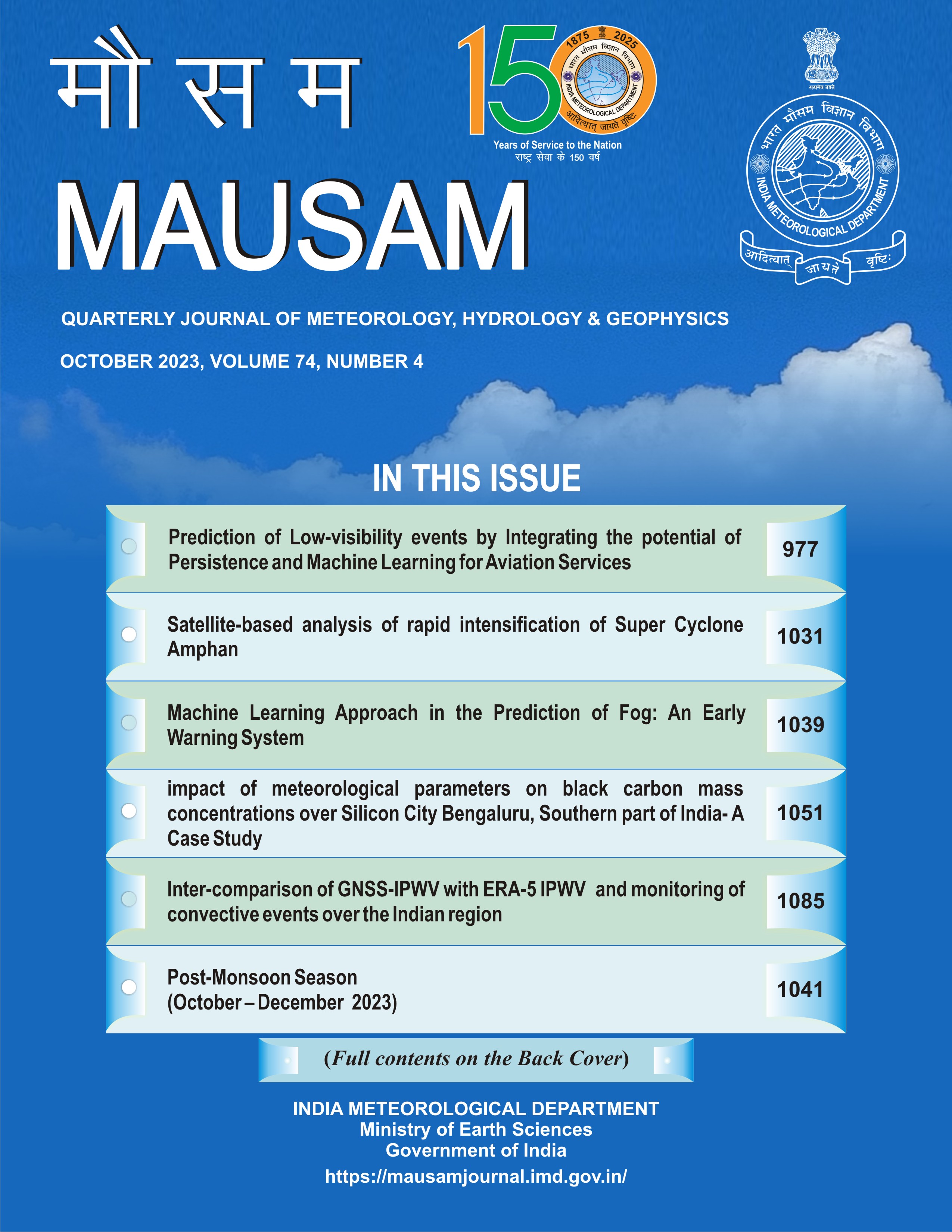Satellite based analysis of rapid intensification of Super Cyclone Amphan
DOI:
https://doi.org/10.54302/mausam.v75i4.6562Abstract
Tropical Cyclones (TCs) are formidable natural hazards with destructive impacts on life and property along the tropical belt. TCs are responsible for multiple hazards such as riverine and urban floods, extreme winds, and lightning, storm surge significantly amplifying the threats they pose. Rapid Intensification (RI), defined as a sudden increase in Maximum Sustained Winds (MSWs) by 30 kt or more in 24 h, has been a growing concern. These events, characterized by a swift escalation in MSW are challenging to the forecasters and remain a considerable operational challenge, amplifying risks for coastal communities. Numerical modeling also struggles to predict RI, with limitations in describing inner core convective scale processes cited as a major limitation. Monitoring and assessing TCs heavily rely on satellite-based observations due to the absence of adequate in-situ measurements over the ocean. In the present study, we examine Super Cyclonic Storm (SuCS) Amphan, the first Super Cyclone of this century, that formed over the Bay of Bengal in 2020 using satellite imagery and derived products available in near-real time to monitor and identify the early signatures for the RI. It is observed that the intensification is intricately tied to substantial expansions in both the outer and inner core sizes along with its symmetricity before the RI. Notably, no significant alterations in size are observed between the very severe cyclonic storm (VSCS) and SuCS stages. The convection characteristics of TCs are found to provide crucial markers of their intensification, with a particular emphasis on polar satellite-based passive microwave imagery for analyzing embedded convection and early eye detection. Key observations indicate that inner convective ring patterns, identified through 37Ghz microwave imagery in lower-level convection, act as precursors to rapid intensification. Concurrently, the outer ring pattern observed during the mid-life course is found to permit further intensification of the system.
Downloads
Published
How to Cite
Issue
Section
License
Copyright (c) 2024 MAUSAM

This work is licensed under a Creative Commons Attribution-NonCommercial 4.0 International License.
All articles published by MAUSAM are licensed under the Creative Commons Attribution 4.0 International License. This permits anyone.
Anyone is free:
- To Share - to copy, distribute and transmit the work
- To Remix - to adapt the work.
Under the following conditions:
- Share - copy and redistribute the material in any medium or format
- Adapt - remix, transform, and build upon the material for any purpose, even
commercially.



